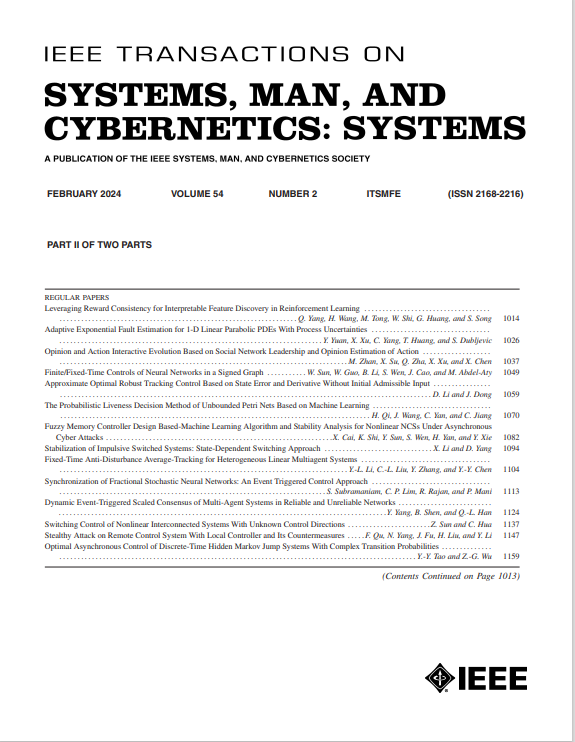A Novel Data-Driven DRNN-SMC Model for Redundant Manipulators
IF 8.6
1区 计算机科学
Q1 AUTOMATION & CONTROL SYSTEMS
IEEE Transactions on Systems Man Cybernetics-Systems
Pub Date : 2025-04-01
DOI:10.1109/TSMC.2025.3550943
引用次数: 0
Abstract
The robot industry is developing rapidly, and how to control the redundant manipulators precisely and effectively has become a new hot topic in industry’s development. In recent years, many scholars in the industry have also proposed various control methods. However, most of these methods are proposed assuming that the Jacobian matrix is known. Actually, in practical applications, the detailed information of Jacobian matrix is often not precisely known. Therefore, this article develops a novel data-driven recurrent neural network (RNN) model that can update the Jacobian matrix and joint angles. By defining two dynamic error functions, two RNN designed formulas are used to obtain a continuous RNN (CRNN) model. Subsequently, the CRNN model is discretized by using Euler forward formula, and a discrete RNN (DRNN) model is generated. Then, a classic sliding mode control (SMC) algorithm is introduced, and DRNN-SMC model is further proposed. Moreover, the corresponding rigorous mathematical derivation and proof are carried out. In addition, simulation tests are carried out by using the Kinova Gen2 manipulator, comparing the DRNN model and PD controller, as well as the DRNN-SMC model and DRNN model, validating the precision of the DRNN-SMC model. Additionally, practical experiments using the Kinova Gen3 manipulator are performed to showcase the applicability and versatility of the DRNN-SMC model.一种新的数据驱动的冗余机械手DRNN-SMC模型
机器人工业正在迅速发展,如何精确有效地控制冗余机械手已成为工业发展中的一个新的热点问题。近年来,许多业内学者也提出了各种控制方法。然而,这些方法大多是在雅可比矩阵已知的前提下提出的。实际上,在实际应用中,雅可比矩阵的详细信息往往是不精确的。因此,本文提出了一种新的数据驱动递归神经网络(RNN)模型,该模型可以更新雅可比矩阵和关节角度。通过定义两个动态误差函数,利用两个RNN设计公式得到连续RNN (CRNN)模型。随后,利用欧拉正演公式对CRNN模型进行离散化,得到离散RNN (DRNN)模型。然后,介绍了滑模控制的经典算法,并进一步提出了DRNN-SMC模型。并进行了相应的严格数学推导和证明。利用Kinova Gen2机械手进行仿真试验,比较DRNN模型和PD控制器,以及DRNN- smc模型和DRNN模型,验证DRNN- smc模型的精度。此外,使用Kinova Gen3机械手进行了实际实验,以展示DRNN-SMC模型的适用性和通用性。
本文章由计算机程序翻译,如有差异,请以英文原文为准。
求助全文
约1分钟内获得全文
求助全文
来源期刊

IEEE Transactions on Systems Man Cybernetics-Systems
AUTOMATION & CONTROL SYSTEMS-COMPUTER SCIENCE, CYBERNETICS
CiteScore
18.50
自引率
11.50%
发文量
812
审稿时长
6 months
期刊介绍:
The IEEE Transactions on Systems, Man, and Cybernetics: Systems encompasses the fields of systems engineering, covering issue formulation, analysis, and modeling throughout the systems engineering lifecycle phases. It addresses decision-making, issue interpretation, systems management, processes, and various methods such as optimization, modeling, and simulation in the development and deployment of large systems.
 求助内容:
求助内容: 应助结果提醒方式:
应助结果提醒方式:


